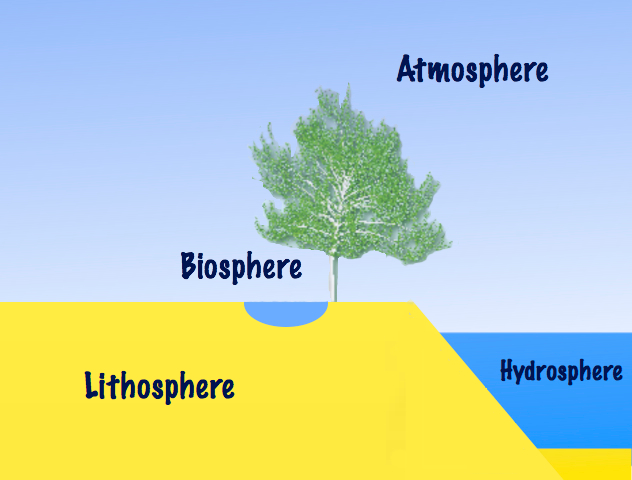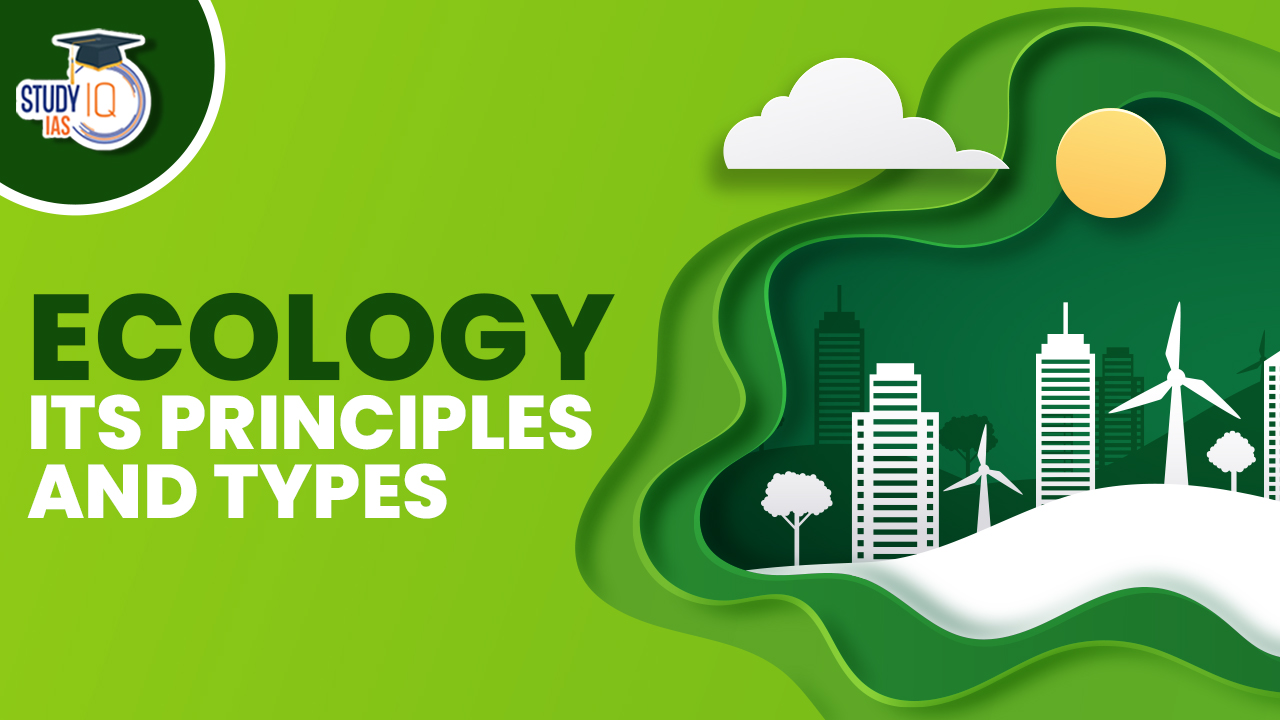Table of Contents
What is Ecology?
Ecology is the study of the interactions between living things, such as humans, and their natural surroundings. It aims to comprehend the crucial interconnections that exist between living things such as plants, animals, and humans. Ecology also offers details on the advantages of ecosystems and how to manage Earth’s resources in a way that preserves the environment for next generations.
German zoologist Ernst Haeckel first used the word “ecology” in 1866. Ancient Indian writings also make the following references to ecological principles: The Vedas, Samhitas, Brahmanas, and Aranyakas-Upanishads, among other ancient literature from the Vedic Period, have references to ecological ideas.
The levels of individuals, populations, communities, ecosystems, and biospheres are all taken into account in ecology. The fields of ecology, biogeography, evolutionary biology, genetics, ethology, and natural history are all closely related. Ecology is a subfield of biology; environmentalism is not the same thing.
Components of Ecology
The primary focus of ecology is the study of biotic and abiotic elements in the environment.
- The living elements of an ecosystem are referred to as biotic components. Examples include microorganisms, plants, fungus, animals, birds, and more.
- The ecosystem’s non-living chemical and physical components are referred to as abiotic components. Examples include the sun, the earth, the air, the minerals, etc.
Levels of Organisation of Ecology
Levels of the organization are natural systems that are frequently described as a whole relationships, in which the higher level as biosphere is being constituted of the lower level as species. The levels of organization in ecology are the individual, population, community, ecosystem, biome, and biosphere. Research on ecosystems can be done at the local or global level. The levels of the organization are described below, going from lowest to highest:

Individual, Species or Organism
- At this level, organisms are capable of independent action or function. Individuals in this area don’t breed with individuals from other groups.
- A living being that can act or function independently is referred to as an organism in ecology. A living thing has the capacity to respond to stimuli, reproduce, grow, adapt, and maintain homeostasis.
- On the planet, an organism could be any animal, plant, fungus, protist, bacteria, or archaeon.
- There are numerous methods to classify these species. The most fundamental division is between organisms with one cell and those with many cells.
- The term “individual species” refers to things like dogs, cats, and cows.
Population
- A population is a group of interbreeding organisms of the same species that are present in a given location at a particular moment.
- The rate of population increase can be positive due to births, immigration, or both, or it can be negative due to emigration, mortality, or both.
- If an individual cannot produce kids that are able to procreate, they are not regarded as belonging to the same species. A population might be a pack of dogs or a pack of cats, for instance.
Community
- Most often, communities are called for the predominant plant kind. For instance, grasses predominate in a grassland community, which may also contain herbs, trees, etc.
- The community can be divided into two parts
- Major Community: They are the independent and large sized communities and depends only on the energy of the sun from outside. Example – Tropical Evergreen Forests
- Minor Community: The communities are not independent but depends on its neighboring communities and often refered as Societies. They are secondary group within the major communities. Example – Mat of Lichens, Cow dung Pad etc.
Ecosystem
An ecosystem is a group of animals that interact with their surroundings and with one another in such a way that system-level processes, like the cycling of elements, arise. An ecosystem is made up of all of the living things (all populations) in a certain area as well as the inanimate elements of the surrounding environment. The nutrient cycles and energy flows that connect these biotic and abiotic elements in an ecology.
Biomes
A biome is a sizable naturally occurring community of plants and animals that inhabits a significant habitat. For instance, the tundra or rainforest biomes. Climate, flora, animal life, and the general kind of soil are used to determine biomes therefore there are no two biomes that are alike.
The climate determines each biome’s boundaries as well as the variety of plants and animals that can be found there. The two key climatic factors are temperature and precipitation. There are various types of biomes, including tundra, boreal forests, grasslands, deserts, temperate forests, tropical rain forests, tropical deciduous forests, and savanna.
Biosphere
We form a vast community of humans, animals, plants, and microorganisms in their designated habitats when we take into account all the various biomes, each merging into the other, and all humans living in many different geographic places. The collection of all the ecosystems that have developed on Earth is known as a biosphere.

The area of the earth where there are living things is referred to as the biosphere. Most of the Earth’s surface, as well as some of the oceans and atmosphere, are included in the biosphere. In other terms, the biosphere is made up of all living things along with their environment. The biosphere thus encompasses the lithosphere, hydrosphere, and atmosphere.
Principles of Ecology
The Principles of Ecology have been discussed below:
- Evolution organizes ecological systems into hierarchies
- Individual organisms group together to form populations, populations group together to form species, and species group together to form higher groupings such as genera and phyla.
- Each can be identified by the quantity and variety (number of types) present in a specific ecosystem or study area.
- The sun is the ultimate source of energy for most ecosystems
- Every ecosystem’s ability to synthesize carbon-rich sugars during photosynthesis is influenced by the amount of solar energy and precipitation that ecosystems receive.
- Organisms are chemical machines that run on energy
- Each organism’s means of subsistence are constrained by the laws of chemistry and physics, which also provide ecology its fundamental framework.
- The number and diversity of life are constrained by the availability of the chemical components and the carbohydrates required to power their construction into organisms.
- Chemical nutrients cycle repeatedly while energy flows through an ecosystem
- Atoms of elements like carbon, nitrogen, and sodium alternate between spending time in alive and dead ecosystem components.
- However, solar energy photons can only be used once before they are lost to the universe.
- Organisms interact—do things to each other—in ways that influence their abundance
- Individual creatures can compete with one another for resources, consume one another, and support one another’s survival.
- The nature and intensity of these interactions can be used to characterize each pair of species in an ecosystem.
- Ecosystems are organized into webs of interactions
- Ecosystems are structured as networks of interactions.
- The interactions that link a population to the other species in its ecosystem have an impact on how abundant it is.
- A major challenge in ecology is figuring out what patterns of abundance and diversity can be predicted because this frequently results in complex behavior.
- Human populations have an outsized role in competing with, preying upon, and helping other organisms
- The ecosystems of the planet contain millions of different species, including humans. Because of our enormous population and advanced technology, we have the power to alter the globe, which increases our ability to influence how the biosphere develops in the future.
- Ecosystems provide essential services to human populations
- These include managing the quality of the water and air, providing items like food and fiber, and providing cultural advantages like recreation. Using the aforementioned guidelines to protect ecosystem services is one of ecology’s main objectives.
Ecology UPSC
The many organizational levels help to categorize the various kinds of interactions that happen in the environment. It helps scientists differentiate between the habitats of various species. Furthermore, if we comprehend these relationships, we may make wise policy choices regarding how to manage our wildlife resources.


 UPPSC Previous Year Question Papers, Dow...
UPPSC Previous Year Question Papers, Dow...
 Most Commonly Used Cancer Drugs and Thei...
Most Commonly Used Cancer Drugs and Thei...
 Tansen Biography, Musical Legacy and Mas...
Tansen Biography, Musical Legacy and Mas...





















